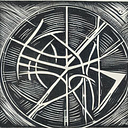Member-only story
Tether Limited Announces that USDT is Backed by Itself
The digital counterfeiters have provided an unprecedented insight into their own fraudulent scheme, but their supporters are still too clueless to be concerned.

In my article on the Coinbase direct listing, I gave a run-down on the enormous counterfeiting scheme being run by Tether Limited, the shady company behind the enormously popular stable-coin USDT. For those who aren’t up-to-date, I’ll try to make a long story short:
Tether Limited is “minting” billions of dollars worth of USDT, a crypto “stable-coin” which is ostensibly a digital dollar. USDT is pegged at a value of 1 USD, and this valuation is only possible because traders believe that Tether Limited possesses physical assets which amount in USD value to the total amount of outstanding Tether. When Tether Limited “mints” two billion USDT to send off to a crypto exchange, the minting is supposedly preceded by an influx of $2 billion of real assets into Tether’s reserves. This is categorically false, and the people behind Tether have been enriching themselves and their conspirators by wantonly printing a dollar-equivalent token without backing. They are digitally counterfeiting US dollars without any capacity to redeem them for their customers, and those make-believe dollars have been the primary driving force behind the enormous crypto bull run we’ve seen so far in 2021.
Until 2019, Tether Limited claimed to issue USDT tokens only upon receiving real USD, so that there was a 1–1 backing of US dollars for ever Tether issued. This, of course, was a lie, and as the New York AG noted at the end of their investigation, there were times when Tether didn’t have any USD liquidity at all, even as their liabilities ballooned into the billions. In 2019, Tether finally distanced themselves from the years-long promise of 1–1 USD backing. No one would ever believe their Bahamian bank account held enough USD to back the billions of digital USD they were printing, so they began the more believable lie that they had unnamed “assets” which exceeded their liabilities. What those assets consisted of, nobody knew for sure, at least until now.
